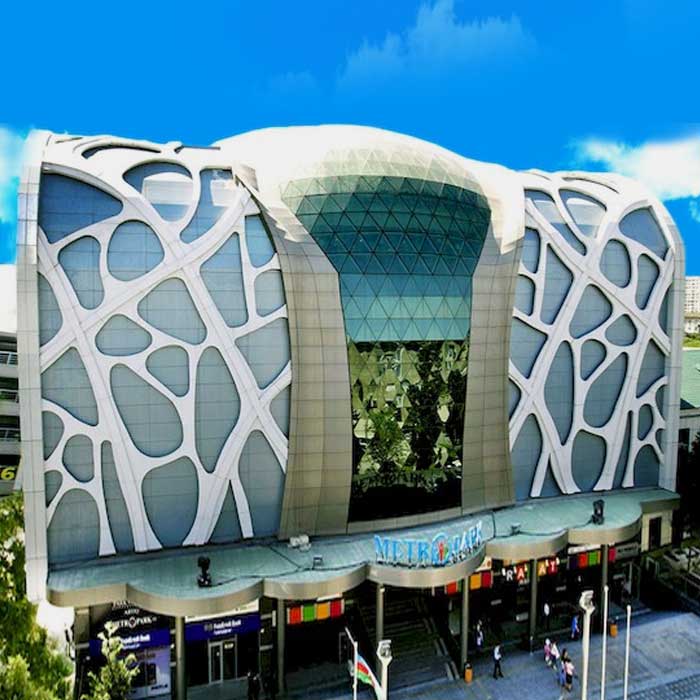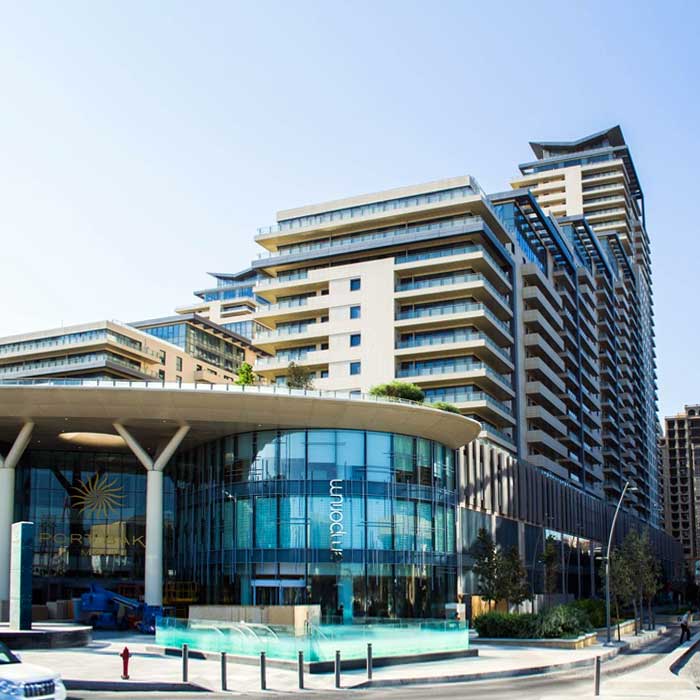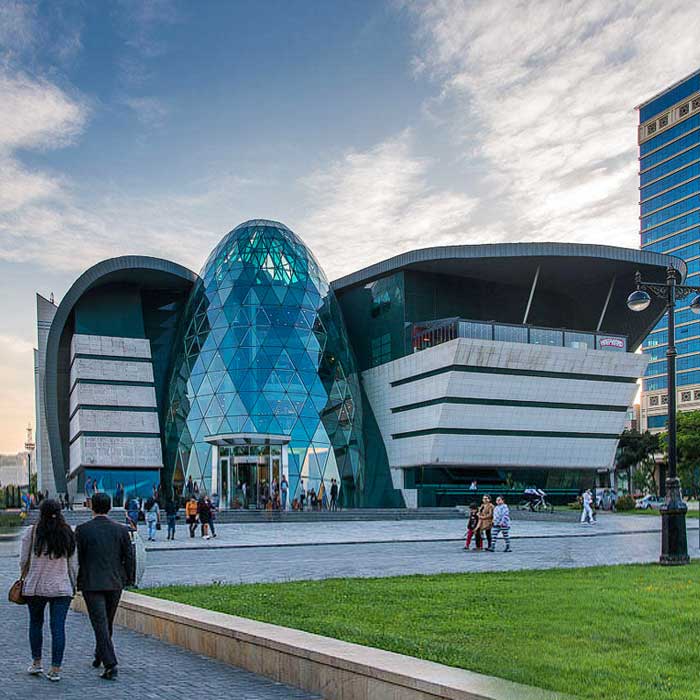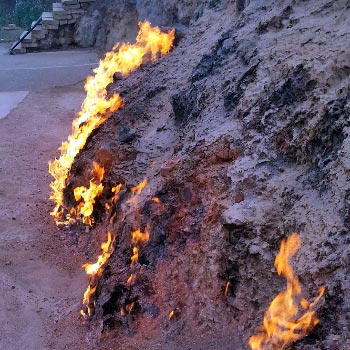
There are 850 mud volcanoes in the world, and over 300 of them are in Azerbaijan. Most are located on Absheron, around Baku. Mud volcanoes in Baku come in a variety of shapes and sizes, but those most common in Azerbaijan have several small cones, or vents. These small cones are an amazing and even beautiful sight.
Mud volcanoes are particularly diverse in Azerbaijan. There are giant volcanoes, such as Toragay and Great Kanizdag in Gobustan, Otmanbozdag and Bozdag-Guzdek on Absheron, with a total elevation of 400 metres. Volcanoes are also registered on islands in the Baku archipelago. Eight of these islands, including Khara-Zira, Zenbil and Garasu, are volcanic. There is a volcano called Goturdag, which is the world’s only continuously erupting volcano; mud squeezing as the specialists put it, has been observed there for many years. There are volcanoes on the coast of the Caspian: Bandovan, Hamamdag and Bahar. I often travel to the sites of mud volcanoes with specialists from oil companies and scientists from Europe and America. They are all very pleased to go, because mud volcanoes are very informative for geologists and experts in the transportation of oil and gas.
The Bandovan volcano is particularly interesting. There was a city at its foot in the Middle Ages. Archaeologists have discovered the remains of dwellings, ceramic crockery and tools only 100-200 metres from the sea. This coastal city may have been destroyed not only by the rising level of the Caspian, but also by volcanic eruption. It is possible that Bandovan was the Etna of Absheron, while the flooded city at its foot was the Caspian Pompeii.
Azerbaijan is also unique because it has all kinds of mud volcano, making it possible to study various aspects of mud eruptions. There are active, dormant, buried and subsea volcanoes in Azerbaijan, as well as those on islands and spewing oil. For instance, there are many subsea mud volcanoes around the Baku archipelago. The Goturdag volcano in Gobustan is the only mud volcano of its kind – it has been issuing mud for 100 years.
Geologists and petroleum specialists see a mud volcano as a free exploratory drilling rig. The value of such a rig is in the fact that may go down 12 km. Like any super-deep well, a mud volcano provides geologists with a plethora of information about the processes taking place at a depth of 10-12 km. Volcanic mud contains valuable microelements such as vanadium, manganese, lithium, boron etc. Erupted water is rich in organic compounds, as well as in bromide, boron and iodine. This is one of the reasons why volcanic mud is extensively used in cosmetology. Research conducted by Azerbaijani scientists under Professor Aliyev’s leadership have established that volcanic clay is a valuable raw material for use in the production of high-quality cement, expanded clay, bricks and steel pellets. It is used extensively in construction. Breccia, another product of eruption, contains a number of valuable chemicals that are easy to extract.
There are plans to establish a mud sanatorium on Absheron in view of the abundance of the material. Thanks to its efficacy in balneal therapy, volcanic mud is used in the treatment of disorders of the central and peripheral nervous system, diseases of the skin and digestive tract, gynaecology and cosmetology.
With the limited number of tourists that visit Azerbaijan today, the Mud volcanoes in Baku, Azerbaijan don’t seem to be under any serious threat. However, with their distinctive ‘lunar’ landscape, scientific interest, tourist and spa potential, there is the possibility that one day too many tourists could lead to inevitable degradation and damage. Mud volcanoes in Azerbaijan are themselves unique monuments and need to be protected for future posterity. Visitors today should take personal responsibility care to keep the area clean and gather up their own liter. Everyone should commit to preserving these natural and rare phenomena so that future generations can enjoy them, as well.
Source: Visions of Azerbaijan

















